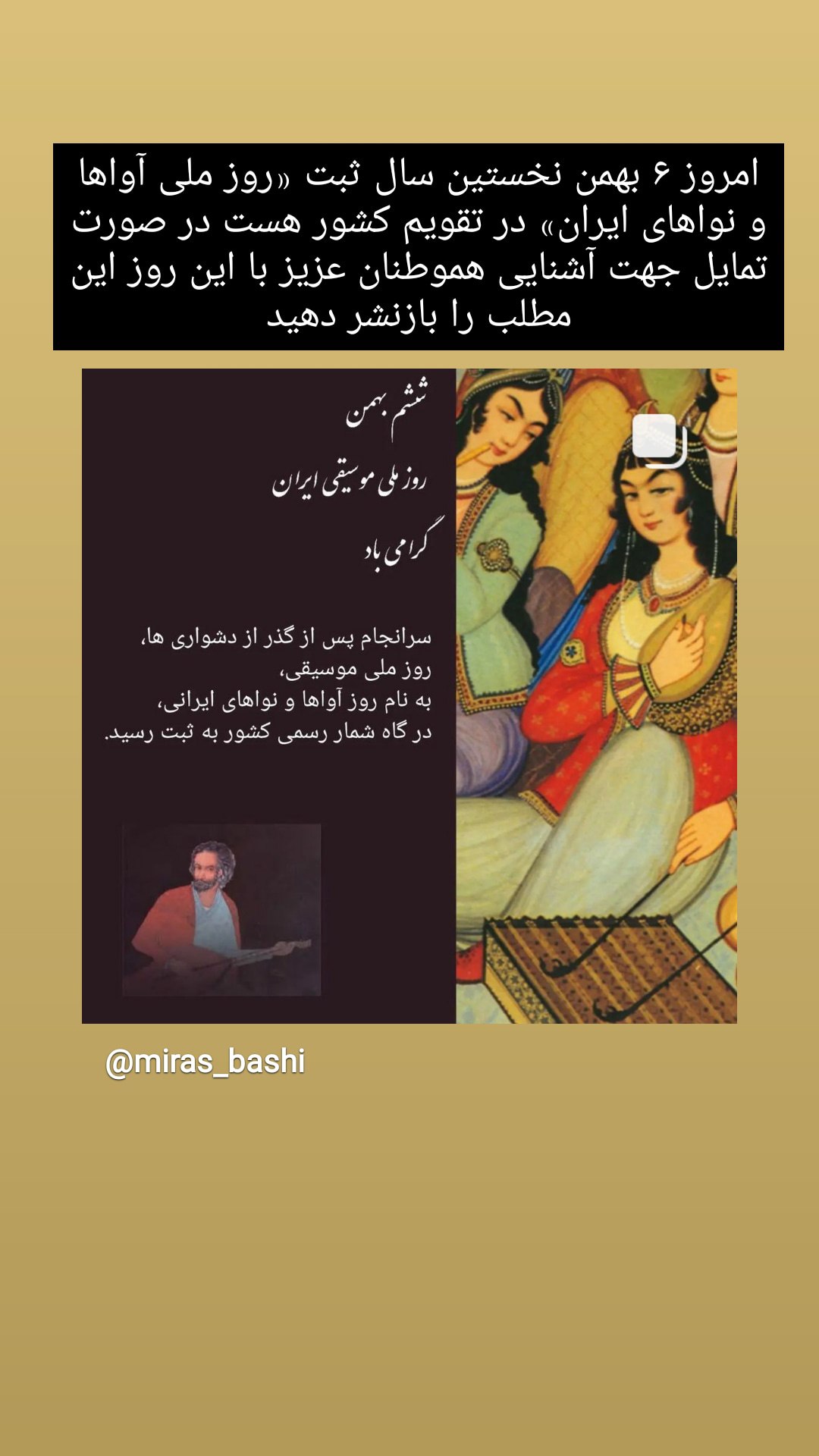On the occasion of the 6th of Bahman day “Iranian sounds and melodies”
According to the report of the heritage, after 20 years of efforts by the music community and suggestions of days such as the 1st of Mehr, the birthday of Mohammad Reza Shajarian, the 4th of Farvardin, the birthday of Abolhasan Saba, and the 4th of Azar, the birthday of Farabi, as the national music day of Iran to be registered in the official calendar of Iran, finally, last year, 6th of Bahman. It was dedicated to this day by the Supreme Council of the Cultural Revolution and it was called the day of “Iranian sounds and sounds”, a day coinciding with the death anniversary of “Safiuddin Ermoi”.
‼”Yesna Khoshfekr”, cultural activist, singer, composer and music researcher, who has been following the registration of this day, explains:
We have been following this case for a long time and 30 musicians to the Culture Council
The public wrote letters and statements, the Neishabur Foundation also joined and after writing several letters and sending documents with the help of friends, this day was recorded in the country’s calendar.
I believe that if a day is to be dedicated to the music of Iran, it should be a day appropriate to the life of “Safiuddin Ermoi”, “Farabi” or “Abdul Qadir Maraghi”. The music of Iran owes and owes to these three people.
Farabi’s birthday was previously chosen as the day of philosophy, and since the date of Safiuddin Ermoi’s birthday was not known, the day of the death of this outstanding music master was chosen as the day of commemoration of Iranian sounds and melodies.
Also because the word “music” is Greek. At the suggestion of professor Fereydoun Junadi and considering the presence of the word “pleasant voice” in the Shahnameh, the name “Iranian sounds and voices” was chosen for this day.
Safi al-Din Ermoi is a miner of the 7th century AH and the author of two important and valuable works of music called “Edwar” and “Rasalah Sharafiya”. By using the works and knowledge of ancestors and elders such as Ishaq Mosuli and Farabi and completing their comments and correcting intervals and compiling and classifying and notating music periods and positions and transferring it to the generation after him, Safiuddin Ermoi made a significant contribution to recording and It promoted Iranian music. In such a way that famous musicians such as Abdul Qadir Maraghi have described his eras and great people such as Qutbuddin Shirazi have also written their music treatise inspired by his works.
According to this activist in the field of music
One of the works that shows the history of Iranian music is the tablet discovered from “Choghamish” located in the south of Dezful city in Khuzestan. It shows a wind player, a string player, a singer who puts his hand on his ear and a percussionist. shows
In the excavations conducted from 1961 to 1966 by the Oriental Institute of the University of Chicago in Chaghamish, a 3400-year-old seal was found, which is considered one of the most important documents in the history of the evolution of music in human civilization. This seal was discovered by two archaeologists from the University of Chicago named Pinhas Delougaz and Helene Kantor.
In part of their archaeological report, it is stated:
This is the first document that humans have of music in an organized form. In this picture, a group of musicians are shown, which in fact embodies the leading and first form of today’s orchestras. Behind the head of the big fork is the profile of a kneeling musician. Another person is drumming with open hands. The third player has two horn-like instruments in his hands and is playing a wind instrument, probably a horn. The fourth player is singing and has his hand under his ear, this position is also seen in ancient Egyptian singing. This way of singing is still common in the Middle East.
In this image, we see an orchestra that has string, wind and percussion instruments and the singer collaborates with them.
https://is.gd/q4EctP
instagram.com/miras_bashi
@mirasbashi
This post is written by maryamatyabi
